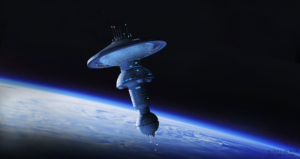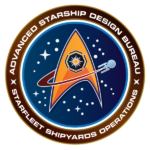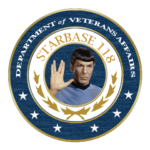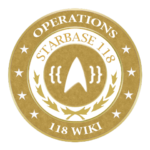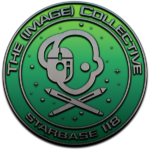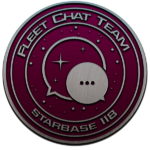

Ahh, what a wonderfully misunderstood place space is. Although the function of UFOP: Starbase 118 is to write Star Trek fanfiction, we don’t require any Trek or space travel knowledge at all. In fact, coming into the group as a “clean slate” means that you’re in the unique position of designing your own character, completely from scratch, without any influences or constraints or preconceived notions.
That said, there’s a lot about space that even the most ardent sci-fi fan incorrectly assumes, and these articles are designed to correct some of the common misconceptions regarding space. But much like a new UFOP: Starbase 118 writer who joins us without any Trek knowledge, knowledge of how the great void works is also not a job requirement.
Although some on-the-job training every now and then can’t hurt. On with the show!
#1 – Space is big.
Space is very, very big.
It’s hard to really explain just how big space is. Think of the biggest thing you can, right now. Something that completely epitomizes the concept of “large”. What did you come up with? An elephant? A skyscraper? Maybe the whole planet Earth?
Maybe you were a bit tricky, and decided to go with “the solar system”.
I’m certain that no matter what you came up with, it is nothing more than an infinitesimally small speck in the grand scheme of things. To illustrate, the following video demonstrates powers of ten, starting out at one square metre and moving backwards at the rate of one power of ten per second.
By 10^15, fifteen powers, the whole solar system is just one speck in the sky. By 10^21, the whole galaxy is clearly visible. By 10^23, the galaxy is just one tiny white dot. By 10^24, clusters of galaxies appear as stars, tiny white dots on a black sea. At 10^24.5, the galaxy clusters are like fine grains of sand on a black canvas.
Space is very, very, very, very, very, very, very, very big.
#2 – Space is basically empty
“Sir, the possibility of successfully navigating an asteroid field is approximately 3720 to 1!”
The immortal words of a member of our sister fandom, C3PO. Unfortunately for the plucky heroes in this scene, the Imperial Star Destroyer chasing them will almost certainly catch them and blow them to bits. That’s because a real asteroid belt is, you guessed it, almost completely empty. Space is very big, but it is also very, very empty.
Case in point, the Cassini mission, which during its trip through the whole belt, saw one asteroid as a point of light at a distance of 1.6 million kilometers. And they went all the way through. This makes sense, though, if you understand point #1 (there is a LOT of space) and you understand just how empty it is. The asteroid belt is between Mars and Jupiter, and is all spread out along that vast distance. However, the sum mass of the asteroid belt -the whole thing – is a factor of 20 smaller than the moon. Furthermore, half of this mass is in four main objects; Ceres, Pallas, Vesta, and Hygiea. Most asteroids are the size of a basketball or a fleck of dust.
To Be Continued…
So we know that space is both big and empty. What other misconceptions do we have? Well, in future articles we’ll learn about how dense nebulas really are (remember point #2), how explosions work in space, how stealth in space works, how heat is your biggest enemy, how guns work just fine in space thank you very much, and a whole lot more. Stay tuned…
The author would like to thank this TV Tropes article for its incredible insight and life-destroying power in equal measure.



